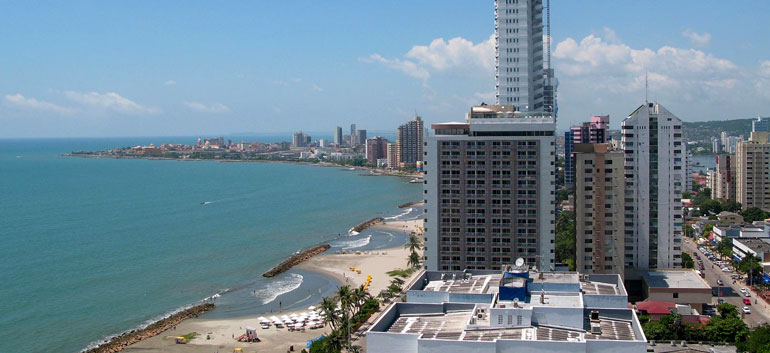Unregulated construction of hotels, roads, homes and vacation houses are “illegally occupying” public lands along coastal areas in Colombia, increasing the environmental threat posed by rising sea levels, according to a government report.
Newspaper El Espectador on Thursday published findings from a report by the Colombian Maritime Authority (DIMAR), which found that irregular construction in low-lying coastal areas supposedly reserved for public use has increased by 14.25 percent between 2008 and 2013. The most affected areas of the country include the areas around Tumaco and Guapi in the southwest Pacific coast, and the Caribbean cities of Santa Marta, Cartagena and Riohacha.
According to El Espectador, a 2006 Government Accounts Office study said that while a number of the illegal coastal structures were built by marginalized members of society, a significant portion – especially tourist developments in the Caribbean region – have been built by wealthy investors from privileged economic backgrounds.
In the Pacific region, the illegal constructions are mostly composed of single family homes, whereas in the Caribbean region there are more instances of economic developers building hotels and vacation homes on public lands, generating profits by illegally occupying fragile coastlines prone to erosion and environmental degradation.
Attempts at land restitution have largely been a failure, as exemplified in the municipality of Tumaco, Nariño state, on Colombia’s Pacific coast. There, of 12,548 land restitution solicitations relating to the illegal occupation of land in the area, only 197 have so far been successful.
The report highlighted the harmful environmental and social impact the illegal developments were having, due to increasing coastal erosion in communities already facing the problem of sea-level rise, caused by rising global temperatures.
“The coral, mangrove and beach ecosystems are the most vulnerable area to coastal erosion,” the report said.
It stated that up to 55 percent of the residents on the Colombian Caribbean coast, and 41 percent along the Pacific coast, could be affected by flooding and increased coastal erosion.
The report also pointed out the development of petroleum extraction and mining activity, along with unplanned roadways, in coastal areas.
The report comes after the Colombian Ministry of Commerce, Industry and Tourism announced an official coastal conservation plan, entitled “Plan of National Development 2010-2014,” with a stated goal of controlling erosion along Colombia’s 2400 miles of coastline by “coordinating [beach] conservation, management, and control.”
Sources
- Complejos turísticos siguen ocupando irregularmente la costa colombiana (El Espectador)
- DOCUMENTO DE POLÍTICA DE PLAYAS TURÍSTICAS: LINEAMIENTOS SECTORIALES (Colombian Ministry of Trade, Industry and Tourism)


